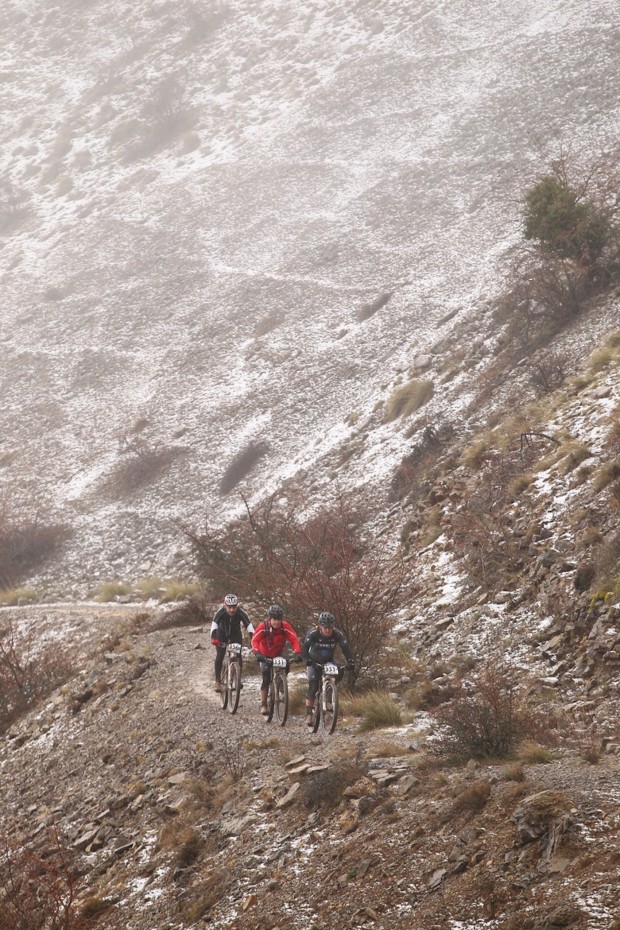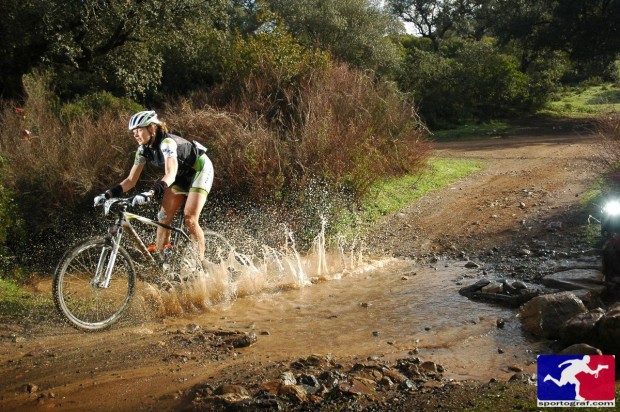Words: Mark Spratt
Now that we’re back home in Cardiff we thought we’d pull our thoughts and memories of this year’s race together. It was certainly a great experience, but what made it so?

When we’ve raced other stage races the transport between venues has been taken care of by the race organisers. Typically the race would move from point to point with kit bags moved in vans during each stage’s race. The Andalucia Bike Race is different in that each stage finishes where it starts, but using three separate start venues it’s each teams responsibility to book accommodation and arrange transport.
We opted to stay in a small town called Martos for the first part of the race, the stages starting from Jaen and Andujar. Martos is a small town 30 minute drive from Jaen. Not much English is spoken there but we readily found everything we needed, the house we rented was remarkably cheap and on our first full day we were inspired by the Tour of Andalucia racing through the narrow streets, complete with former Cardiff JIF member Geraint Thomas at the head of the peloton.

We had hired a minibus from Malaga Airport using Pepe Car as recommended by an Andalusian work colleague – it proved an ideal vehicle for moving four of us around with bikes, and although it was a large vehicle in the narrow one-way streets of Cordoba the limited parking there meant having one large van was better than two smaller ones.
For the stages starting in Cordoba we rented a stylish three-bedroom apartment in the old city, complete with underground secure parking. Cordoba marked a fantastic finishing venue for the Andalucia Bike Race since all of the competitors were now in much closer proximity, there were bars and restaurants to visit (once the racing was over!) and the city itself is packed with history and interesting buildings to visit.

We packed tools to cover most eventualities, including a bleed kit, but the unexpected failure of my XT rear brake the day before the race started wasn’t cured by bleeding. Fortunately the race village was well supported and the Scott mechanic freely spent an hour trying to fix it, simply because Mel was wearing her Scott jersey. Unfortunately the verdict was terminal, but one of his colleagues duly took over in finding a local shop with a brake in stock. Arriving at said shop the brake was ready for me to take and despite my clear need the price was a very reasonable 90 Euros; the locals were proving very helpful and accommodating. When the barrel adjuster on Mel’s shifter broke in a crash the SRAM mechanic immediately gave her a replacement returning her gears to full working order and when I snapped a spoke on stage three the guys at Duribaik, a small shop near our apartment, fixed it for only 10 Euros and stayed open late to do so.
The weather in late February is unpredicatable and variable meaning a range of clothing was packed, including waterproof shorts and overshoes. Neither of these were in fact used, but a lightweight waterproof was needed for both its water repellence and extra insulation, particularly on day two when we reached snow at the higher points of the course. We both wore gilets on every day, in part for some warmth since the 10am starts could be chilly and in part for the extra pockets for gels and tools. One change I would make for next time is to take two pairs of cycling shoes since river crossings are a regular feature each day. We both used RRP NeoGuards on our forks to minimise front wheel spray. However, I don’t think Mel appreciated the clean front these provided us as she face-planted in a deep muddy puddle early on stage three!

As we’ve reported, much of the racing is on rocky singletrack and the trails are more technical than those in most stage races. It therefore pays to be fit, in good condition and confident of your abilities since crashing in such conditions could be very painful. Such trails also take their toll on the bike and we suffered our share of mechanicals that slowed us down at times. The many river crossings and often sandy conditions meant drivetrains needed attention and in addition to fitting new rings, chains and cassettes before the race we carried a small bottle of lube and used it on each day. Sliced tyres were a concern so we both opted for tougher sidewalls – Maxxis with EXO for me and Schwalbe Snakeskin for Mel. Neither of us suffered with a puncture. My Fox forks were serviced before the race by local experts MOJO and were returned looking like new. They performed faultlessly throughout the race. We both rode hardtail 29ers and would do so again. This was my first true test of a new frame and the 6 days I spent racing on it have created a new love affair.
Travelling in a group helps reduce costs and Mel and I were accompanied by Grant Leavy and Matt Thompson, two elite local mountain bikers. Having a wider group of British riders was also of benefit, both for the company at meals and in bars but also for helping each other with logistical and mechanical challenges. It also provided an element of friendly competition as we naturally tried to outdo each other, as well as the many other nationalities around us. For some of the Brits this was their first stage race and at the final night celebrations all were determined to do more. I certainly intend to do the Andalucia Bike Race again and I think some of them will join me.
We’ve both had support along the way and would each like to thank our sponsors. Mark was assisted by Cardiff bike shop Cyclopaedia, MOJO suspension and Rapid Racer Products, not to mention the individual charity that is Anthony Jordan. Mel would like to thank Scott Sport UK, Syncros, SRAM, TORQ, Schwalbe, Fibrax, Fit in no time, Lezyne and RRP.




